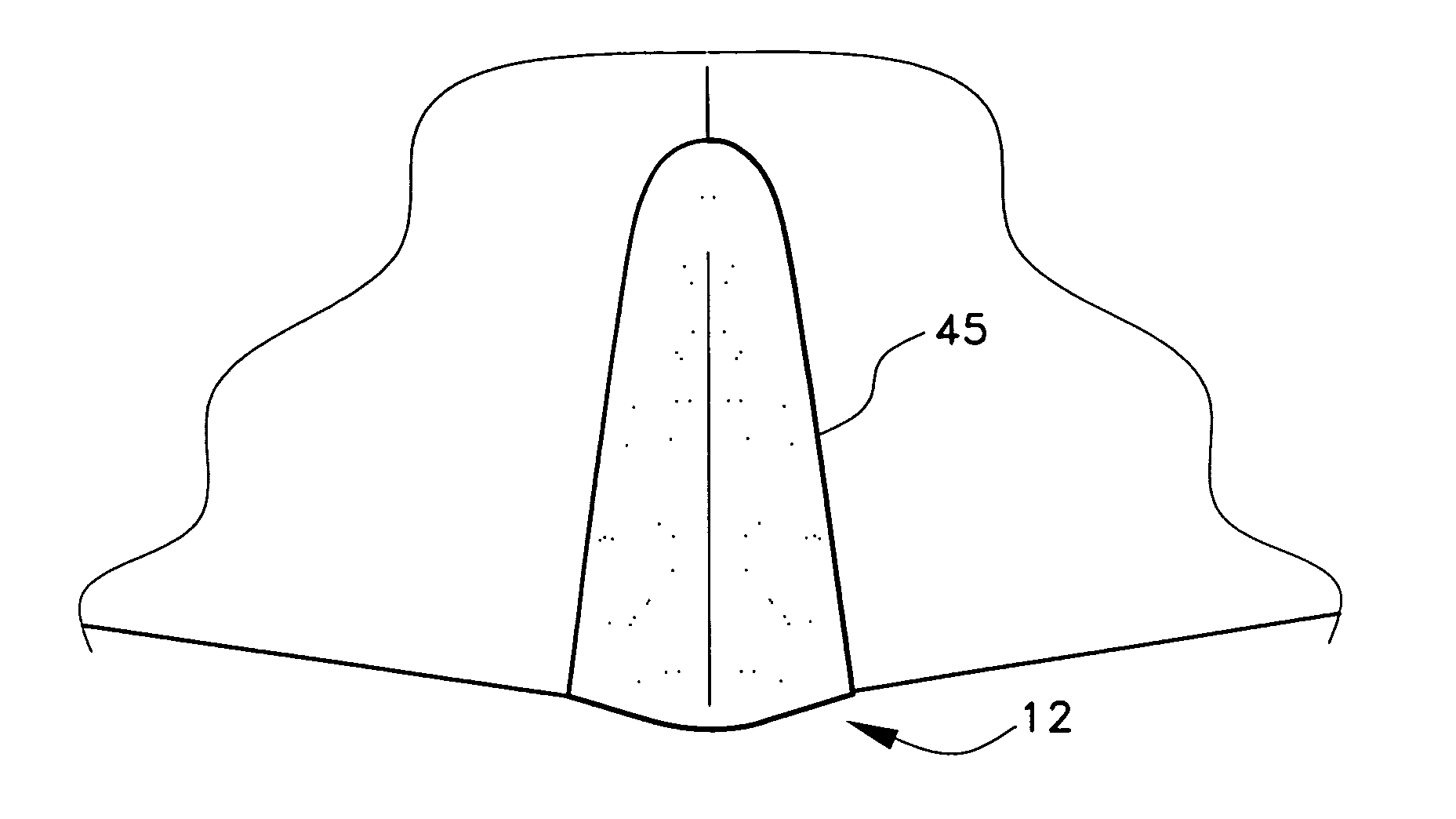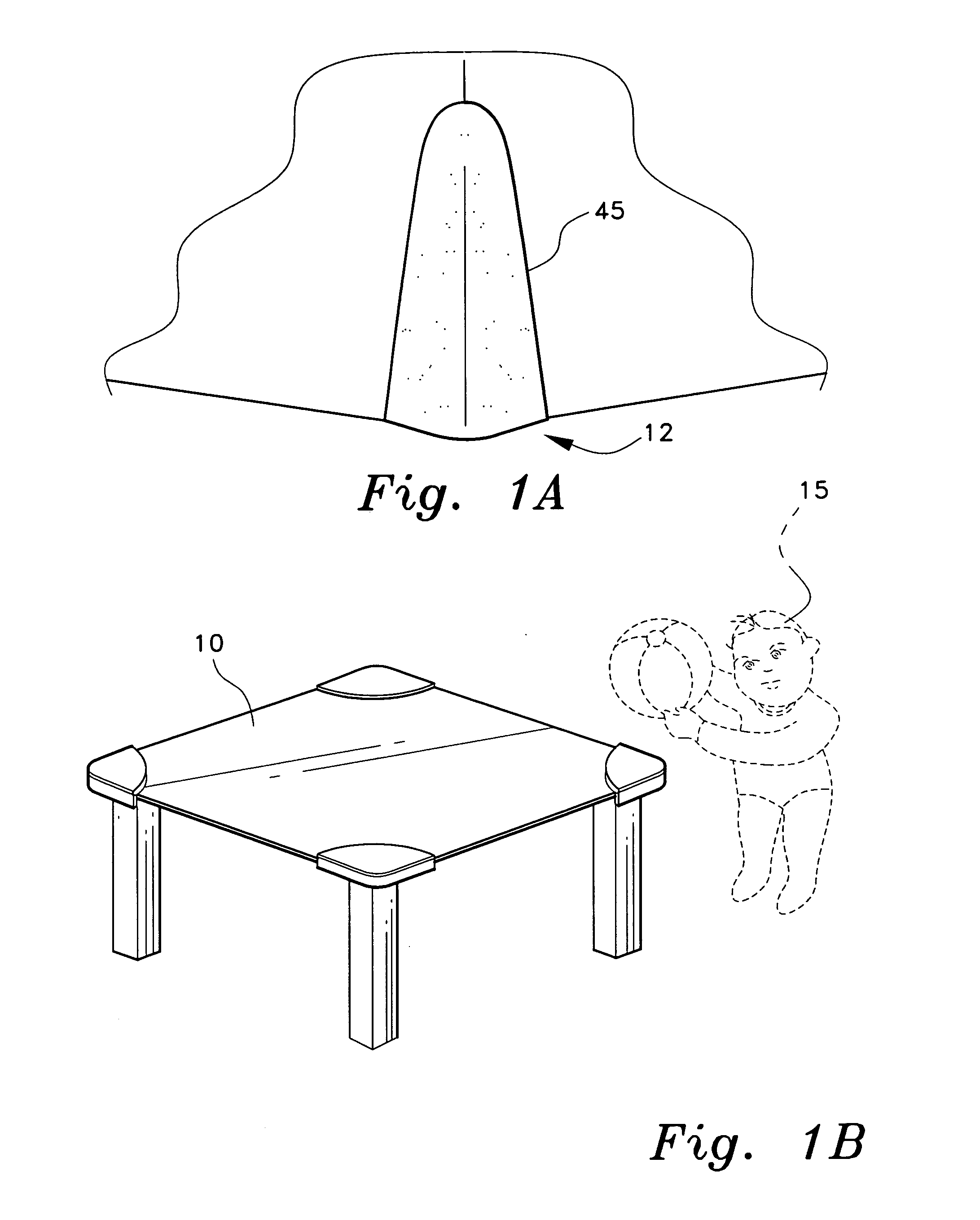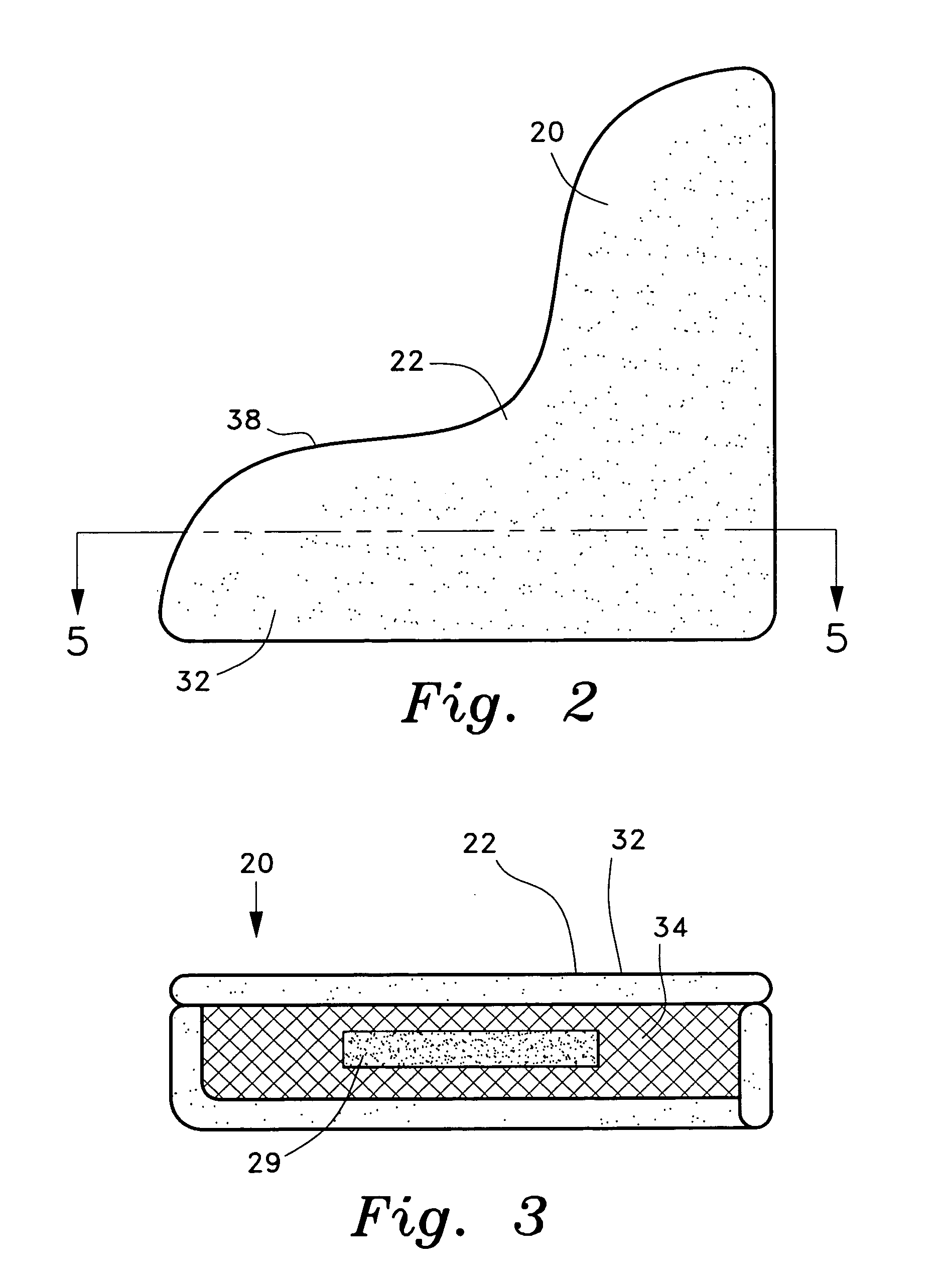Padded corner covers
a corner cover and padded technology, applied in the field of safety devices, can solve the problems of affecting the aesthetics of art devices, affecting the use of art devices, and affecting the use of furniture or walls with sharp corners,
- Summary
- Abstract
- Description
- Claims
- Application Information
AI Technical Summary
Benefits of technology
Problems solved by technology
Method used
Image
Examples
Embodiment Construction
[0043]FIGS. 1A and 1B show a typical living environment where a child 15 may be found playing. In the environment of FIG. 1A is a coffee table 10 that has four sharp corners covered with exemplary bumpers 20. In FIG. 1B, a wall corner 12 is protected by a wall bumper 45. It is apparent that child 15 is much safer playing with his ball where sharp corners typically found in a living environment are protected with bumpers 20, 45.
[0044]FIGS. 2, 3, 4, 5, and 6 show the construction of an exemplary three-sided corner bumper 20. FIGS. 2, 3, and 4 show plan, side, and front views, respectively, of corner bumper 20. FIG. 5 shows a cross section view taken along line 5-5 of FIG. 2. FIG. 6 shows a bottom view of the corner bumper looking up through a table 10 showing the under side of corner bumper 20.
[0045] Corner bumper 20 comprises a top cushion 22 and a side cushion 24. Top cushion 22 covers the corner area of a horizontal side of a three-sided corner, such as commonly formed by househo...
PUM
| Property | Measurement | Unit |
|---|---|---|
| thick | aaaaa | aaaaa |
| flexible | aaaaa | aaaaa |
| shape | aaaaa | aaaaa |
Abstract
Description
Claims
Application Information
 Login to View More
Login to View More - R&D
- Intellectual Property
- Life Sciences
- Materials
- Tech Scout
- Unparalleled Data Quality
- Higher Quality Content
- 60% Fewer Hallucinations
Browse by: Latest US Patents, China's latest patents, Technical Efficacy Thesaurus, Application Domain, Technology Topic, Popular Technical Reports.
© 2025 PatSnap. All rights reserved.Legal|Privacy policy|Modern Slavery Act Transparency Statement|Sitemap|About US| Contact US: help@patsnap.com



